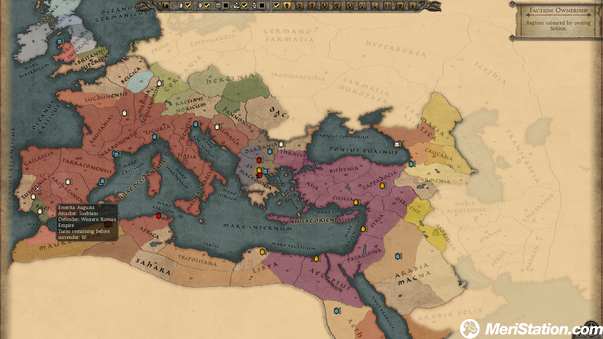The Creative Assembly continues to embrace new historical periods, with Total War: Attilabecoming the ninth title in the Total War series, or the sixth if we only consider the different periods in which they occur. On this occasion, the company has placed the game at the beginning of the High Middle Ages, which could be located halfway between
Total War: Rome II and Medieval II: Total War. The Great Camapaña will begin in the year 395 AD, with the division of the Roman Empire after the death of Emperor Theodosius I, sharing the dominated regions between his two sons. Thus the Western
Roman Empire was born, with capital in Rome and ruled by Flavio Honorio, and the Roman Empire of the East, under the command of Flavio Arcadio and establishing its capital in Constantinopolis (also known as Constantinople or Byzantium) Also that same year, Alaric I is named King of the Visigoths … And decides to declare war on the heirs of Theodosius.
The features available in this Total War: Attilathey come divided into different categories. On the one hand we find the Barbarian Kingdoms: Saxons and Franks, who dominate Germanic lands and – for years – have been a serious headache for Rome. While the Franks seek to forge their own empire from the Roman remains, the Saxons have set their sights on the northern
territories that have been left unattended … Islands included. We find the Great Nomads, Germanic peoples who were dominated by Rome and now
seek their place in the world: Ostrogoths, Alans, Vandals and Visigoths. Also to the Roman Empire, in its two current divisions: East and West. In the Eastern Empires we find the Sasánidas, the powerful and influential descendants of the Persians, in full expansion. By last,
Each faction has an initial Leader, a Faction Trait and a Cultural Trait, which work in the same way as in Total War: Rome II. Obviously, starting with any of them will not
be as simple, being Huns and Sasánidas the most affordable, against a Western Roman Empire destined to fall. There are 4 different ways to win the Victory in a Campaign, each one defined by a series of requirements that vary according to the chosen faction. In this way, we can achieve a Small Victory,
Cultural or Military Victories, or a Divine Triumph … Depending on our actions at the end of the game. To this end, the controlled provinces are taken into account – either directly or through pacts – and also military victories, recruited units, constructed buildings, etc.
Of course, if we are not interested in playing a Campaign we can always take part in some historical battles -9 available- or create a personalized one.
Already involved in the task of governing an empire -or forming your own- we have a title that will not be complicated to the followers of the Total War
series. The action takes place in turns, centered almost always on the map that make up the territories available in the game, composed of regions of Europe, North Africa and the Middle East. Divided into provinces, each of these subdivisions can contain up to 3 cities or settlements, each with its own name and which will be developed separately.
The first one will always refer to the capital of the area, while the other two will be complementary settlements. Of course, it is perfectly possible that each of them
belongs to different factions, so that until we manage to control the 3 cities, we will not have complete control over the province of which they are a part. Although, in some cases, this could matter little to us.
Cities can be developed by building buildings, some of which are unique to each faction or require a certain technological level. This is an important fact,
because if we conquer an enemy settlement that contains unique constructions of its side – or of which we do not yet know its intricacies – we will not be able to
take advantage of all its benefits. For this reason, buildings can be dismantled – recovering some solids – or reconverted into other alternatives that we do know.

